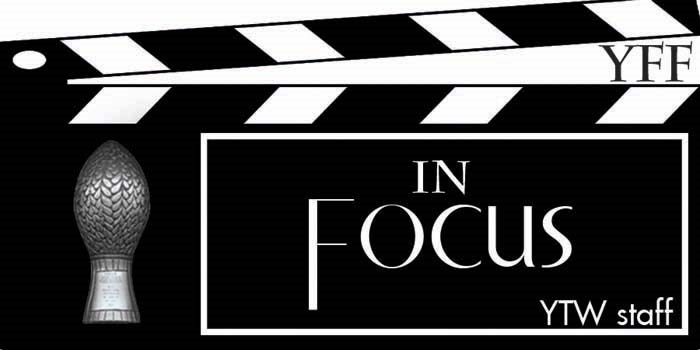When newly minted Oscar nominee Theodore Ushev took home Best of Festival in 2011, he said one of his goals with his film, The Lipsett Diaries, was to get people to go back and look at the work of Arthur Lipsett. With that stated goal, he has made a film that benefits from context, as his film opens up the more Lipsett you watch, and has succeeded.
At first glance, the Lipsett Diaries can seem a bit inscrutable. As Xavier Dolan reads from the imagined diaries of the experimental filmmaker, we get a succession of painted images to tell the story, while also, on occasion, being fairly mysterious and sometimes a bit rough and unfinished - Ushev likes showing us the edge of the work, the opening credits even show you the number of the frame in the sequence. One can read a lot into that choice, but one can read a lot into many of the choices Ushev makes, even choosing animation for the subject seems to be an attempt to invite interpretation. The paint is covering something – whether or paper or some unknown text that peeks out from the edge – and this film is about what’s hidden behind what you see on screen.
That’s this author’s interpretation, at least. The film is in a similar place, being an artist’s attempt to interpret another artist. The diaries are an invention, made clear in the credits, an attempt to understand what was going on in the mind of the artist. Criticism, frequently, becomes a different attempt to get inside an artist’s mind. The Lipsett Diaries can be read as part biography, part criticism, as it roughly tells the story of Arthur Lipsett while also giving us a glimpse into the mind of Theodore Ushev, who has said this was an intensely personal project.
Lipsett seems like a tortured soul, and he did commit suicide in 1986. That’s depicted in his films, which have a rapid succession of images over sound, and depicted in this film by Ushev’s brush, which can go from beautiful to grotesque in the space of a frame. He replicates Lipsett’s style and, on occasion, his content, while adding his own layer of abstraction on top of it, imagining a showing of Lipsett’s film Very Nice, Very Nice, for example. It’s his way of making sense of an artist he admires.
He succeeds in his goal, because he has made a film that is fascinating on its surface but almost requires the viewer to go back and watch some Lipsett films in order to make sense of it. It’s fun to think about, but it’s difficult to really grasp until you go back and start watching the films that inspired it in the first place.
Both artists worked for the National Film Board, and thanks to this, their work is collected in one place, nfb.ca. If you’re so inclined, it can make an interesting afternoon watching their films in quick succession.




